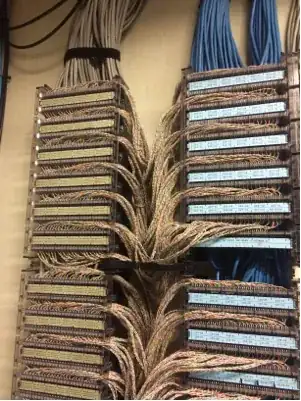Looking at taking over management of an old network that was done in 2004. Surprisingly, for the time, it is category 6 cable. About 200 ports in each of 5 IDFs, all running PoE.
But I'm worried the cross-connects are unusable for a modern network. The switches are connected to standard patch panels. The cable from there is terminated into a punch down block (BIX.) The cabling coming in from the edge is also terminated into punch down blocks. The connection between the two punch down blocks is made with UTP cables of up to a metre long that have had the jacket removed.
So, can that setup handle gigabit speeds? I'm inclined to say no, but maybe I am just being overly cautious.
